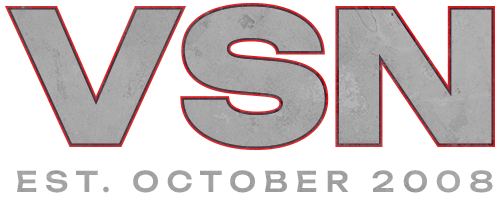Hughes
It’s the Hughes signing that comes as much more of a shock, because his 2013 just looked so, so bad. It’s really the years more than the dollars that stand out, because both FanGraphs readers and Bowden expected in the seven to eight million range, but only for a year or two, not three.
Still, you wonder how much of the negative reaction to Hughes comes because of things that don’t really matter. That is, take a look at the following chart of Hughes’ three seasons in which he made 30 starts or more:
Years
GS
IP
K/9
BB/9
HR/9
BABIP
FIP
xFIP
WAR
2010
31
176.1
7.45
2.96
1.29
.273
4.25
4.13
2.5
2012
32
191.1
7.76
2.16
1.65
.304
4.56
4.35
2.3
2013
30
145.2
7.48
2.59
1.48
.324
4.50
4.39
1.3
Some increasing BABIP and homer problems, to be sure, but otherwise he’s been relatively consistent in terms of strikeouts and walks, and you can see that his FIP and xFIP have been close to stable. If you didn’t know anything about Hughes other than this, you’d think that he’d have ended up with three similarly mediocre years, with 2010 perhaps being slightly better.
But look at how differently those years did turn out. In 2010, he was 18-8 with a 4.19 ERA, landing on the All-Star team. In 2012, he was 16-13 with a 4.23 ERA. In 2013? Disaster, with a 4-14, and 5.19 ERA. We can easily say that he wasn’t as good in 2013 as he was in 2010; we can’t really say that he was so much of a different pitcher that the massive change in those numbers really tell us anything, but while we have moved beyond using wins, losses, and ERA (mostly), much of the baseball world hasn’t, fueling a lot of the negative reaction here.
The bet here for Minnesota is that Hughes might be a bigger “change of scenery” guy than anyone else in the bigs, because a homer-prone flyball pitcher in Yankee Stadium is just about the worst possible scenario. Last year, 17 of his 24 homers came in the Bronx, along with a brutal .388 wOBA against; the Twins are hoping they’re going to see the road version, who allowed a .318 wOBA last year and just .303 over his career.
It’s going to help somewhat, as the 2013 park factors show:
HR as LH
HR as RH
Yankee Stadium
114
106
Target Field
89
97
But this is far from a slam dunk, because Hughes can’t blame his troubles simply on his park and reliance on win/loss record. He does a good job getting ahead of hitters, then has trouble putting them away, as Jason Collette showed last week. He’s become increasingly homer-prone while inducing fewer ground balls, which is a scary combination, and he’s essentially become a two-pitch pitcher, relying heavily on his fastball and slider. You can get away with that when one or both of those pitches are elite; you can’t when the fastball is increasingly getting hit harder, as numbers both here and at Brooks‘ show. Along with the fact that Hughes had difficulty working deep into games last year, that looks like the profile of a reliever, especially when Hughes was excellent in that role back in 2009.
So it’s easy to say that this deal looks a lot more questionable than the Nolasco deal, because there’s so much more risk involved that Hughes is just going to be terrible. But again, the average annual salary makes sense here, because $8m/year really isn’t all that much these days, and so the Twins are making a gamble that getting Hughes out of New York and into a friendlier park can make him merely a reliable league-average pitcher. If it does, then they earn value that exceeds what they’re paying him. If not, he’s an expensive fifth starter (though perhaps still better than what they’d have otherwise) or maybe a reliever. It’s the third guaranteed year that really burns, though Hughes is also heading only into his age-28 season.
That’s the kind of risk the Twins should be taking, anyway, the kind that doesn’t cost them a draft pick or young talent in return. If it blows up, it’s merely money lost, and while the Twins are hardly the Dodgers, a potentially bad 3/$24m deal shouldn’t be enough to torpedo any team. For years, the Pohlad ownership has been criticized for not spending more of their billions on the team, and the Twins had just $26m committed to 2015 before these signings. We can’t criticize both for spending money, and for not.
